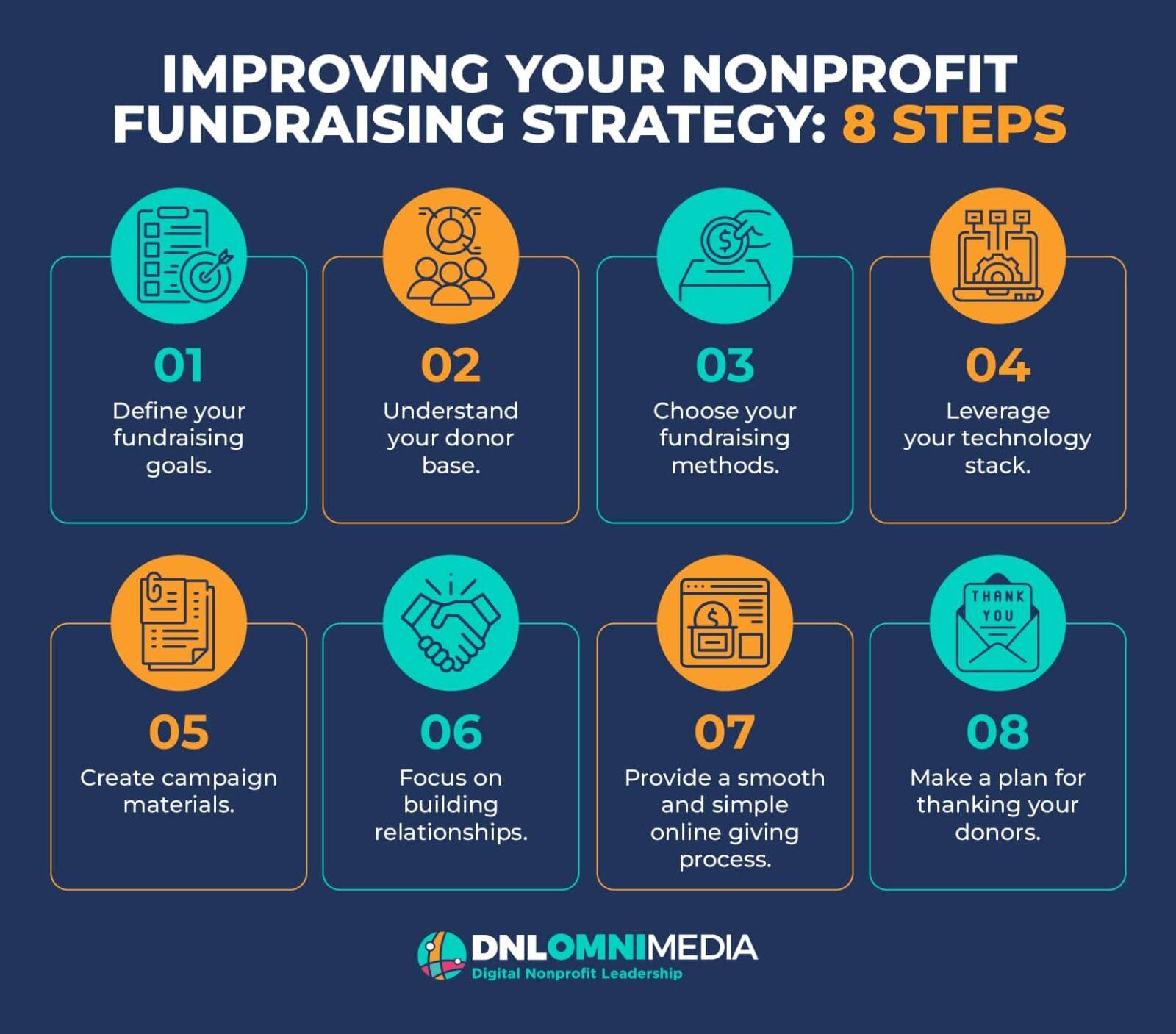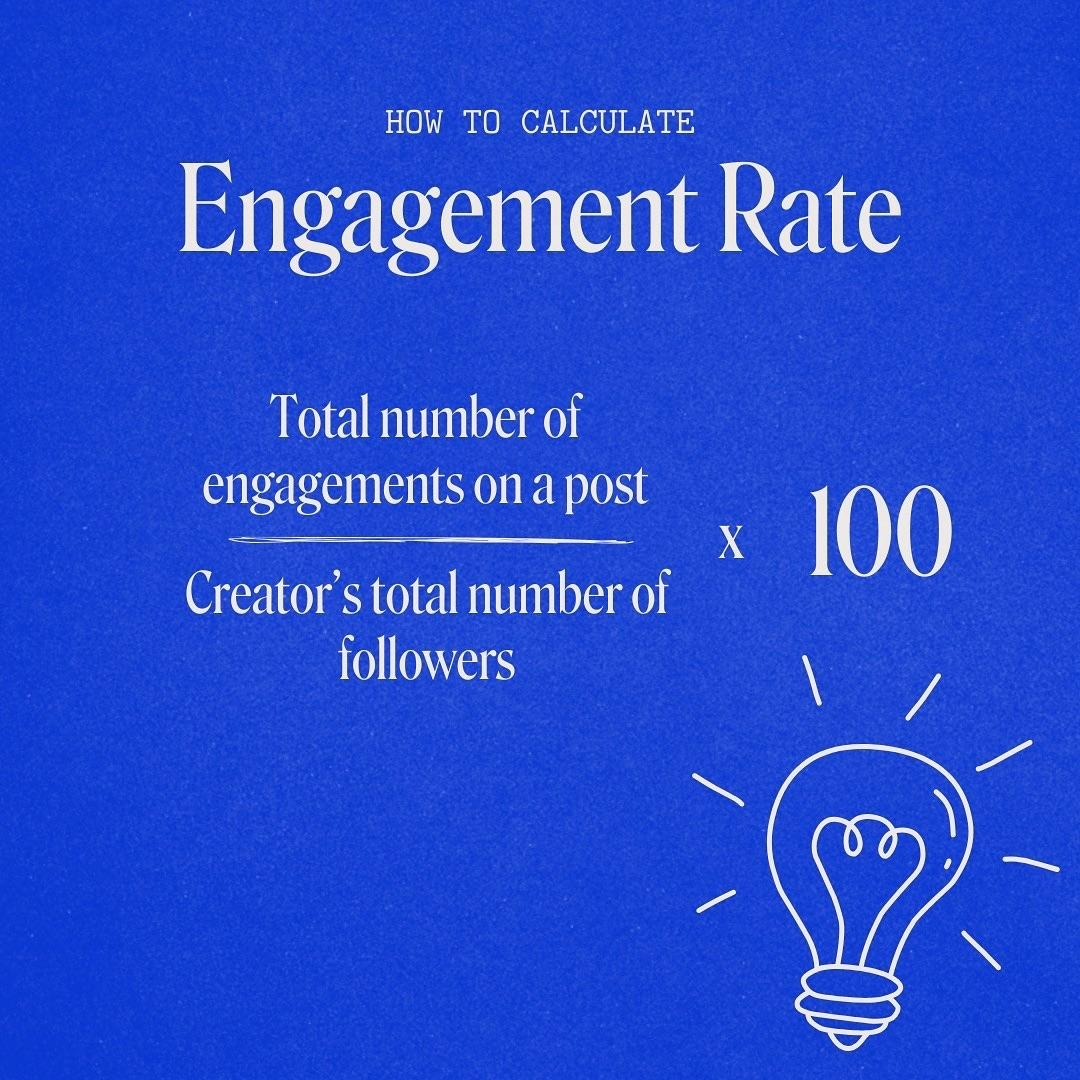
In the ever-evolving landscape of nonprofit organizations, the ability to effectively market your mission can make all the difference in attracting and retaining donors. Whether you’re a seasoned leader or just starting your journey in the nonprofit world, understanding how to connect with potential supporters is crucial. After all, your cause deserves to be heard, and the right marketing strategies can amplify your message and inspire generosity. In this guide, we’ll delve into 15 effective tips that will not only help you attract more donors but also engage them on a deeper level. From harnessing the power of storytelling to leveraging social media, these actionable insights will empower your organization to build lasting relationships and secure the funding needed to make a real impact. So, let’s dive in and unlock the potential of your nonprofit marketing!
Understanding Your Audience for Targeted Outreach
Understanding your audience is pivotal for effective outreach in the nonprofit sector. When you know who you’re speaking to, you can tailor your messaging, campaigns, and strategies to resonate with their values and interests. This connection not only fosters trust but also increases the likelihood of engagement and support.
Start by identifying the different segments within your audience. Consider their demographics, interests, and motivations. You might find it helpful to create personas representing various donor types. This could include:
- Major Donors: Individuals or organizations capable of making significant contributions.
- Recurring Donors: Those who donate regularly, possibly on a monthly or yearly basis.
- New Donors: First-time contributors who need to be nurtured.
- Volunteers: People who give their time and may also be potential donors.
Once you’ve segmented your audience, dive deeper into understanding their motivations. What inspires them to support a cause? This could range from personal experiences to a desire for community impact. Conduct surveys or hold focus groups to gather insights directly from your supporters. This data can be invaluable in shaping your outreach strategy.
Utilizing social media analytics can also provide a wealth of information about your audience. By analyzing engagement metrics, you can identify trends in what content resonates best with different segments. Tailor your messaging to include stories that highlight the impact of donations, showcasing real beneficiaries and their journeys.
Don’t underestimate the power of storytelling. People connect emotionally with narratives that reflect their own values. Share stories of individuals or communities that have benefited from your organization’s work. This not only illustrates the importance of your mission but also aligns your message with the interests and motivations of your audience.
consider the channels through which you communicate. Different segments may prefer different platforms. For instance, older donors might engage more through newsletters and direct mail, while younger supporters may be more active on social media. Tailor your outreach methods accordingly to maximize engagement.
a deep understanding of your audience enables you to create targeted outreach efforts that resonate. By leveraging data, crafting compelling narratives, and utilizing diverse communication channels, you can significantly enhance your connection with potential donors, leading to increased support and engagement with your nonprofit’s mission.
Crafting a Compelling Mission Statement
Creating a mission statement is a foundational step for any nonprofit organization. It serves as a guiding light, helping to align your team, inspire your supporters, and attract potential donors. A well-crafted mission statement encapsulates your purpose and objectives in a way that resonates with your audience.
To write a mission statement that stands out, consider the following elements:
- Clarity: Avoid jargon and complex language. Your mission statement should be easily understood by anyone, regardless of their background.
- Passion: Infuse your statement with the passion that drives your organization. Let your enthusiasm shine through, making it contagious to your audience.
- Specificity: Be precise about what your organization does. Highlight your unique approach or the specific needs you address within your community.
- Impact: Clearly articulate the change you seek to create. Donors want to know how their contributions will make a difference.
Here’s a simple framework to help you formulate your mission statement:
| Component | Questions to Consider |
|---|---|
| Purpose | What is the primary goal of your organization? |
| Target Audience | Who do you serve or aim to benefit? |
| Method | How do you achieve your objectives? |
| Vision | What future do you envision as a result of your work? |
Once you’ve crafted your mission statement, test it out. Share it with your team, trusted supporters, and even potential donors to gather feedback. Ask them if your statement inspires them and if it clearly conveys your purpose. Be open to refining it based on their insights.
Remember that your mission statement is not just a formality. It should be prominently displayed on your website, in fundraising materials, and during presentations. Regularly revisit and revise it to ensure it reflects any changes in your organization or its goals.
By articulating a clear and compelling mission statement, you lay the groundwork for successful outreach and donor engagement. It serves as a powerful tool to not only attract funding but also to cultivate lasting relationships with your supporters.

Building a Strong Online Presence
In today’s digital age, establishing a robust online presence is crucial for nonprofits seeking to attract more donors. An engaging online platform not only enhances visibility but also builds trust and connection with your audience. Here are some effective strategies to elevate your nonprofit’s online footprint:
- Create a User-Friendly Website: Ensure your website is easy to navigate, visually appealing, and mobile-friendly. This is often the first interaction potential donors will have with your organization.
- Leverage Social Media: Use platforms like Facebook, Instagram, and Twitter to share impactful stories, showcase your work, and engage with your community. Regular updates keep your audience informed and invested.
- Optimize for Search Engines: Implement SEO strategies to improve your website’s visibility on search engines. Use relevant keywords to help potential donors find your cause easily.
- Utilize Email Marketing: Build a mailing list and send regular newsletters highlighting your initiatives, successes, and upcoming events. Personalize your messages to make donors feel valued.
- Content Marketing: Share blogs, videos, and infographics that educate your audience about your mission, the issues you tackle, and the positive impact of their contributions.
- Engage with Online Communities: Participate in forums and groups related to your cause. Building relationships in these spaces can lead to increased awareness and support.
- Run Online Fundraising Campaigns: Use crowdfunding platforms to encourage donations online. Create compelling stories around your campaigns to inspire action.
To effectively measure your online presence, consider tracking vital metrics. Here’s a simple table to help you gauge your online success:
| Metric | Goal | Current Status |
|---|---|---|
| Website Traffic | Increase by 30% | 20% Growth |
| Email Subscribers | Reach 1,000 Subscribers | 750 Subscribers |
| Social Media Engagement | Double Engagement Rate | Engagement Steady |
| Online Donations | Increase by 25% | 15% Growth |
Remember, consistency is key. Regularly updating your content, interacting with followers, and showcasing donor impact will strengthen your online presence over time. Engage in conversations, respond to comments, and create a community that feels connected to your mission.
Lastly, don’t shy away from experimenting with new trends in digital marketing. The online landscape is constantly evolving, and being adaptable can set you apart from the competition. Whether it’s a viral social media challenge or a trending hashtag, keep your nonprofit relevant and in the spotlight.

Utilizing Social Media to Engage and Inspire
In the digital age, social media has transformed into a vibrant platform for nonprofits to foster connections and build relationships with potential donors. Utilizing these channels effectively can not only increase your reach but also inspire action and engagement among your audience.
Start by determining which platforms your target audience is most active on. Whether it’s Facebook, Instagram, Twitter, or LinkedIn, tailor your content to fit each platform’s unique style. Here are some effective strategies:
- Share Impactful Stories: People connect with stories. Highlight real-life testimonials from beneficiaries of your services to showcase the tangible impact of donations.
- Visual Content: Invest in high-quality images and videos that depict your organization’s mission in action. A compelling visual narrative can often convey more than words alone.
- Engage with Your Audience: Respond to comments, ask questions, and create polls to encourage interaction. This not only builds community but also shows that you value their opinions.
- Host Live Events: Utilize live streams to host Q&A sessions, behind-the-scenes tours, or fundraising events. This real-time engagement can significantly increase donor interest and support.
- Utilize Hashtags: Leverage trending hashtags related to your cause to reach a broader audience. Creating a unique hashtag for your campaigns can also enhance visibility and encourage participation.
Collaboration can further amplify your voice in the crowded social media landscape. Partner with influencers and other organizations that share your mission. By working together, you can tap into each other’s audiences, boosting your overall engagement and donor prospects.
Moreover, don’t shy away from using social media advertising. Platforms like Facebook and Instagram offer targeted ad options that allow you to reach potential donors based on their interests and behaviors. Here’s a quick comparison of some effective ad types:
| Ad Type | Best For | Cost Effectiveness |
|---|---|---|
| Image Ads | Brand Awareness | Medium |
| Video Ads | Engagement | High |
| Carousel Ads | Showcasing Multiple Projects | Medium |
| Story Ads | Real-Time Updates | Low |
Lastly, track and analyze your social media efforts. Use insights and analytics to see what content resonates most with your audience. This will help you refine your strategy in real-time, ensuring that your engagement tactics remain effective and relevant.
By leveraging the power of social media, your nonprofit can not only attract more donors but also cultivate a loyal community that feels connected to your mission. The key is to be authentic, consistent, and purposeful in your messaging. Engage your audience, inspire them, and watch as they respond to your call to action.

Creating Impactful Content That Resonates
Creating content that truly resonates with your audience is essential for nonprofit organizations looking to attract more donors. Understanding your audience’s motivations and crafting messages that align with their values can significantly enhance your outreach efforts. Here are some elements to keep in mind when developing impactful content.
Know Your Audience
Before you begin creating content, take the time to understand who your audience is. Consider their demographics, interests, and values:
- Age group
- Geographic location
- Interests and hobbies
- Philanthropic tendencies
Tailoring your content to speak directly to these aspects will make your message more engaging and relevant.
Tell Compelling Stories
Stories create emotional connections. Share real-life experiences from individuals or communities impacted by your work. Use vivid imagery and relatable narratives to draw your audience in:
- Highlight a specific beneficiary’s journey.
- Showcase volunteers making a difference.
- Illustrate the challenges faced and the triumphs achieved.
When potential donors can visualize the impact of their contributions, they are more likely to feel compelled to donate.
Utilize Engaging Visuals
Incorporate high-quality images, infographics, and videos to complement your written content. Visual elements can significantly enhance understanding and retention, making your message more impactful:
- A before-and-after photo series of a project.
- Infographics showing statistics related to your mission.
- Short videos featuring heartfelt testimonials.
Optimize for Various Platforms
Your content should be adaptable across different platforms where your audience engages with you, such as social media, email newsletters, and blogs. Here’s a quick overview of how to tailor your approach:
| Platform | Content Type | Engagement Strategy |
|---|---|---|
| Stories & Live Videos | Encourage shares and comments. | |
| High-Quality Images & Reels | Use hashtags and engage with followers. | |
| In-Depth Articles | Personalized messages and calls to action. |
Call to Action
Every piece of content you create should include a clear call to action. This might be asking readers to donate, volunteer, or share your message. Make it easy and compelling by using direct language:
- “Join us in making a difference today!”
- “Your support can change lives—donate now.”
- “Help spread the word by sharing this post!”
Measure and Adapt
don’t forget to measure the effectiveness of your content. Use analytics to track engagement levels, click-through rates, and conversion metrics. This data can help you refine your content strategy:
- What types of stories engage your audience the most?
- Which visuals attract higher engagement?
- What calls to action yield the best results?
By continually refining your approach based on audience feedback and performance metrics, you can ensure your content remains impactful and drives donations effectively.
Leveraging Email Campaigns for Donor Engagement
Email campaigns are a powerhouse in donor engagement, offering a direct line of communication that helps build lasting relationships. To truly harness the potential of your email outreach, consider these key strategies:
- Personalization: Tailor your messages to address donors by their names and reference their past contributions. Personalized emails show that you value their support.
- Compelling Storytelling: Share impactful stories that illustrate the difference their donations have made. Use vivid imagery and emotional narratives to connect with your audience.
- Clear Calls to Action: Every email should have a clear purpose, whether it’s encouraging a donation, inviting them to an event, or asking for feedback. Make your calls to action stand out.
- Segment Your Audience: Not all donors are the same. Segment your email list based on giving history, interests, or demographics to send more relevant content.
- Timing Matters: Experiment with sending emails at different times and days to find when your audience is most receptive. A/B testing can help refine your strategy.
- Visual Appeal: Use high-quality images and a clean layout to create visually engaging emails. Attractive designs can significantly increase click-through rates.
- Follow-ups: Don’t underestimate the power of follow-up emails. A simple thank-you or a reminder can keep your organization top-of-mind for donors.
To make your email campaigns even more effective, keep track of important metrics. Here’s a quick overview of some key performance indicators you should monitor:
| Metric | Description |
|---|---|
| Open Rate | Percentage of recipients who opened your email. A higher open rate indicates effective subject lines. |
| Click-Through Rate (CTR) | Percentage of recipients who clicked on a link within the email. This measures engagement and interest. |
| Conversion Rate | Percentage of recipients who completed a desired action, such as making a donation. This is the ultimate goal. |
| Unsubscribe Rate | Percentage of people who opt-out from your mailing list. A high rate may indicate content issues. |
Regularly analyzing these metrics will help you refine your approach and enhance your email campaigns. Remember, building a strong connection with your donors takes time and consistency. Stay committed to your messaging and keep your audience engaged.
don’t shy away from incorporating feedback from your donors. Engaging with them through surveys or direct questions can provide invaluable insights that can shape your future campaigns. By demonstrating that you listen and respond to their needs, you’ll cultivate a more loyal donor base.

Showcasing Success Stories to Build Trust
Building trust with potential donors is crucial for any nonprofit organization. One of the most effective ways to achieve this is through the power of storytelling. By showcasing success stories, you can create a compelling narrative that resonates with your audience and demonstrates the real impact of their contributions. This not only engages potential donors but also reinforces the value of your mission.
Consider featuring real-life testimonials from individuals or communities that have benefited from your organization’s efforts. These stories serve as a powerful reminder that donations translate into tangible change. Use quotes, photos, and even video snippets to personalize these narratives. A voice that speaks directly to the experiences of beneficiaries can evoke empathy and connection, making donors more likely to support your cause.
Incorporating data-driven results alongside personal stories can further enhance credibility. For instance, you might create a simple table to illustrate the impact of your work:
| Year | Funds Raised | People Helped | Programs Implemented |
|---|---|---|---|
| 2021 | $100,000 | 500 | 10 |
| 2022 | $150,000 | 800 | 12 |
| 2023 | $200,000 | 1,200 | 15 |
Highlighting these achievements not only demonstrates your organization’s effectiveness but also instills confidence in potential donors. They want to know that their money is being used wisely and that their support will lead to further success.
Don’t forget the power of social media in amplifying these stories. Share short snippets or quotes with eye-catching images on platforms like Facebook, Twitter, and Instagram. This will create shareable content that can reach a wider audience, encouraging others to contribute and share their own experiences with your organization.
Lastly, consider creating a dedicated section on your website for these success stories. This could be in the form of a blog, a video series, or a digital magazine. Make it easy for visitors to navigate and find the stories that resonate with them. By consistently updating this section, you’ll keep your audience engaged and informed about your work.
Ultimately, showcasing success stories is about more than just marketing; it’s about building a community of supporters who are emotionally invested in your cause. By sharing these narratives, you not only inspire action but also foster a sense of belonging among donors, making them feel like an integral part of your mission.

Implementing Effective Fundraising Strategies
In the world of nonprofit organizations, effective fundraising is the lifeblood that fuels your mission. Implementing the right strategies can drastically enhance your ability to attract and retain donors. Here are some powerful approaches to consider:
- Leverage Social Media: Utilize platforms like Facebook, Instagram, and Twitter to share your story. Engaging content can drive donations and raise awareness.
- Host Fundraising Events: Organizing events—whether virtual or in-person—can create community involvement and offer donors a tangible way to support your mission.
- Craft Compelling Stories: Share heartfelt narratives about those you help. Personal stories can resonate deeply with potential donors, making them more likely to contribute.
- Utilize Email Marketing: Regularly update your supporters with newsletters. Highlight your achievements, upcoming events, and specific fundraising needs.
- Build Relationships: Donor retention is just as important as new acquisitions. Regular communication and gratitude can foster lasting connections.
Additionally, consider implementing the following strategies to maximize your fundraising potential:
- Collaborate with Local Businesses: Partnerships can expand your reach. Businesses may be willing to sponsor events or donate a portion of sales.
- Offer Matching Gifts: Encourage donors to check if their employers offer matching gift programs. This can double the impact of their contributions.
- Utilize Crowdfunding Platforms: Websites like GoFundMe or Kickstarter can help you reach broader audiences and tap into new donor pools.
- Create a Monthly Giving Program: Regular contributions can provide a steady revenue stream. Make it easy for donors to set up recurring donations.
- Engage Your Board Members: Encourage your board to leverage their networks. Personal connections can lead to significant donations.
| Strategy | Benefits |
|---|---|
| Social Media Campaigns | Broader reach and engagement with younger audiences |
| Fundraising Events | Build community and face-to-face connections |
| Monthly Giving | Predictable income and donor loyalty |
| Storytelling | Emotional connection and stronger support |
don’t forget to measure your success. Tracking your fundraising campaigns will help you understand what works best for your organization. Use tools like Google Analytics or software tailored for nonprofits to assess engagement and adjust strategies accordingly. Remember, the goal is not just to raise funds, but to foster a community that believes in your mission and supports your work long-term.

Exploring Partnerships and Collaborations
Forming strong partnerships and collaborations can significantly enhance your nonprofit’s reach and effectiveness. By working together with like-minded organizations, businesses, and community leaders, you can not only pool resources but also amplify your message and attract more donors. Here’s how to navigate the partnership landscape to maximize your impact:
Identify Complementary Organizations
Start by identifying organizations that share your mission or have similar goals. Look for those that can offer unique perspectives or resources that complement your work. This could include:
- Local businesses willing to sponsor events
- Other nonprofits focused on similar issues
- Community groups that have access to your target audience
Build Meaningful Relationships
Once you’ve identified potential partners, take the time to build relationships. Engage with them on social media, attend their events, or invite them for coffee to discuss mutual goals. A genuine connection can turn a simple partnership into a dynamic collaboration.
Leverage Joint Marketing Opportunities
Collaborative marketing can extend your reach exponentially. Consider joint campaigns or events that highlight both organizations. This strategy can include:
- Co-hosted fundraising events
- Shared social media campaigns
- Joint newsletters featuring each organization’s initiatives
Measure and Share Success
Collaborative efforts are most effective when you can measure their impact. Set clear goals and metrics for your partnership, and track progress regularly. Share these successes with your donors and stakeholders to showcase the power of collaboration. Providing transparency can build trust and further encourage donations.
Consider In-Kind Donations
Partnerships don’t always have to be monetary. In-kind donations, such as services, products, or volunteer hours, can significantly benefit your organization. Here’s how you can capitalize on in-kind support:
- Seek local businesses that can contribute goods or services
- Collaborate with professionals who can offer pro bono work, like graphic designers or marketers
- Encourage volunteers from partner organizations to participate in your events
Stay Flexible and Open-Minded
The best collaborations often evolve over time. Stay open to new ideas and be willing to adapt your approach as the partnership develops. Regular check-ins and communication will ensure all parties feel valued and engaged.
The Power of Community Engagement
don’t underestimate the power of grassroots community engagement through partnerships. Encourage partners to involve their networks, which can create a ripple effect. For instance, if a local business promotes your cause, their customers may become engaged, leading to new donors and volunteers.

Hosting Events That Connect and Inspire
When it comes to engaging your community, hosting events can be a game-changer. They provide a unique opportunity to connect with donors on a personal level, showcasing your mission and the impact of their contributions. Here are some actionable strategies to ensure your events not only attract attendees but also inspire a deeper commitment to your cause.
Identify your audience and tailor the event to their interests. Understanding who you want to invite will help shape the type of event you organize. Consider hosting:
- Workshops: Hands-on learning experiences related to your mission.
- Networking Mixers: Create spaces for like-minded individuals to connect.
- Fundraising Galas: Elegant evenings that highlight your achievements and future goals.
Next, leverage storytelling to create an emotional connection. Share impactful stories about the people you serve or the projects you’ve launched. This can be done through:
- Engaging speeches by beneficiaries or key stakeholders.
- Short videos that highlight the impact of donations.
- Interactive displays showcasing your projects and their outcomes.
Don’t forget to incorporate interactive elements into your events. People love being part of the action, so consider including:
- Live demonstrations: Show how donations make a difference in real-time.
- Q&A sessions: Encourage open dialogue between donors and your team.
- Live polls: Gather real-time feedback on what attendees care about most.
Another essential aspect is to create a memorable atmosphere. The ambiance can significantly affect how attendees feel about your organization. Ensure you have:
- Engaging décor: Use colors and visuals that reflect your brand.
- Comfortable seating: Encourage mingling and conversations.
- Good food: A delightful culinary experience can keep attendees around longer.
follow up after the event. Thank your donors and share the outcomes of the event to reinforce the connection. Use email campaigns or social media to:
- Share highlights and photos.
- Announce future events and initiatives.
- Invite feedback to improve future gatherings.
By implementing these strategies, you turn your events into powerful platforms for connection and inspiration. Your donors will feel valued, engaged, and more likely to support your mission long after the last guest has left.

Thanking Donors and Showing Appreciation
Every dollar donated to your nonprofit organization is a testament to the trust and belief that donors have in your mission. Recognizing and appreciating these contributions is not just a courtesy; it’s essential for building lasting relationships that encourage future support. Here are some engaging ways to express gratitude that will resonate with your donors and amplify their connection to your cause.
Personalized Thank-You Notes: A heartfelt, handwritten note can make a world of difference. Tailoring your message to reflect the donor’s specific contribution and how it impacts your organization creates a personal touch. Here’s how you can enhance this practice:
- Include the donor’s name and specific donation amount.
- Share a story or anecdote that illustrates the impact of their gift.
- Invite them to follow your organization’s journey through newsletters or social media.
Highlight Donor Contributions: Public recognition can be incredibly motivating for donors. Consider dedicating a section of your website or social media platforms to showcase your supporters. A simple table can do wonders:
| Donor Name | Contribution Amount | Impact Statement |
|---|---|---|
| Jane Doe | $1,000 | Funds provided meals for 150 families in need. |
| John Smith | $500 | Supplied books and educational resources for a local school. |
| Mary Johnson | $250 | Supported community health initiatives for underprivileged populations. |
Exclusive Events: Hosting special events for donors can foster a sense of community and belonging. These gatherings, whether virtual or in-person, provide an excellent opportunity to thank them publicly and share the outcomes of their generosity. Consider:
- Invitations to donor appreciation dinners or luncheons.
- Exclusive webinars where donors can learn more about the impact of their contributions.
- Behind-the-scenes tours of your projects or facilities to witness the results of their support firsthand.
Regular Updates: Keep your donors in the loop with regular updates about your organization’s progress. Send out newsletters that highlight achievements made possible by their donations. Ensure these communications are visually appealing and engaging, showcasing stories of individuals or communities who have benefited from their support.
Feedback Opportunities: Show appreciation by valuing your donors’ opinions. Create avenues for feedback, such as surveys or informal chats, where donors can share their thoughts on your programs and initiatives. This not only makes them feel valued but also helps you improve your donor engagement strategies.
Incorporating these strategies into your nonprofit’s marketing efforts can significantly enhance donor relations. By showing genuine appreciation, you cultivate a community of loyal supporters who are more likely to continue their support and spread the word about your mission.

Measuring Success and Adjusting Your Strategies
Understanding the effectiveness of your marketing efforts is crucial for any nonprofit looking to engage more donors. By measuring success, you can pinpoint what’s working, what’s not, and how to elevate your strategies to maximize your outreach. Here are some ways to gauge your progress and make necessary adjustments.
Define Key Performance Indicators (KPIs): Start by establishing clear KPIs that align with your fundraising goals. These indicators will help you track success over time. Consider the following:
- Donor Acquisition Rate – How many new donors are you attracting each month?
- Donor Retention Rate – What percentage of donors are returning for subsequent donations?
- Campaign Engagement – How well are your campaigns resonating? Look at open rates, click-through rates, and social media engagement.
Utilize Analytics Tools: Leverage analytics tools to dig deeper into your data. Platforms like Google Analytics or specific nonprofit software can provide insights into user behavior on your website and social media channels. Focus on:
- Traffic Sources - Where are your visitors coming from? This helps you understand which marketing channels are most effective.
- Conversion Rates – Track how many visitors convert into donors after engaging with your content. This is essential for assessing campaign effectiveness.
Gather Feedback: Don’t underestimate the power of direct feedback from donors. Conduct surveys or follow-up calls to understand their experience with your organization. Ask about:
- What motivated them to give?
- Their experience navigating your website or donation process.
- How they prefer to be communicated with in the future.
Adjust Your Strategies: Based on the insights you gather, be ready to pivot your strategies. If a particular campaign isn’t performing as expected, don’t hesitate to tweak your messaging, visuals, or targeting. Consider implementing the following:
| Strategy Adjustment | Reason for Change |
|---|---|
| Update Email Campaign Templates | Low open rates suggest content isn’t engaging enough. |
| Refine Target Audience | High bounce rates may indicate misalignment with the audience. |
| Increase Social Media Posting Frequency | Low engagement metrics suggest a need for more visibility. |
keep in mind that measuring success is an ongoing process. Regularly review your KPIs, gather feedback, and adjust strategies as needed. This iterative approach will not only help you attract more donors but also strengthen your organization’s mission in the long run. By staying adaptable and responsive, you can ensure your nonprofit thrives in an ever-changing landscape.

Harnessing the Power of Storytelling
Storytelling is an age-old art that has the power to captivate hearts and inspire action. In the realm of nonprofit marketing, weaving compelling narratives can set your organization apart and engage potential donors on a deeper level. Rather than presenting facts and figures alone, harness the emotional weight behind your mission and share stories that resonate with your audience.
When you tell a story, consider the following elements to make it impactful:
- Relatability: Choose stories that your audience can connect with. Highlight individuals or communities that reflect the demographics of your donor base.
- Emotion: Evoke feelings—joy, sadness, hope. Emotional storytelling can motivate donors to take action, as they feel personally invested in the outcome.
- Impact: Show how their contributions make a difference. Share specific outcomes that resulted from previous donations, creating a sense of urgency and a call to action.
Consider using visual storytelling techniques as well. Incorporating photographs, videos, or infographics can enhance your narrative. A well-placed image of a beneficiary’s smile or a short video clip showcasing the impact of your work can be far more persuasive than text alone.
Another effective way to tell your story is through testimonials. Highlight the voices of those who have directly benefited from your organization. Use quotes or short anecdotes to illustrate the real-world impact of your work. A simple table can help summarize these testimonials:
| Beneficiary | Testimonial |
|---|---|
| Maria, Single Mother | “Thanks to the support, I can now provide a better life for my children.” |
| James, Student | “The scholarship changed my life. I can pursue my dreams!” |
| Sara, Community Leader | “This organization helped us build a safer neighborhood.” |
Additionally, consider the narrative arc of your story. Begin with a compelling hook that draws your audience in, present the conflict or challenge faced, and then lead them to the resolution that your organization provides. This structure not only keeps the audience engaged but also emphasizes the need for support.
Don’t forget to call your audience to action. After sharing your powerful story, invite them to join your mission. Whether it’s through a donation, volunteering, or sharing your message, make it easy for them to take the next step.
be authentic. Your stories should genuinely represent your organization’s mission and values. Avoid embellishing or creating false narratives, as transparency builds trust with your supporters. When donors feel connected to your cause through real stories, they are more likely to become long-term supporters.

Creating a Community Around Your Cause
Building a vibrant community around your cause is essential for sustaining momentum and attracting support. Your mission can resonate deeply with individuals who are looking for a way to contribute to something meaningful. To create this sense of community, consider the following strategies:
- Engage with Your Audience: Utilize social media platforms to foster conversation. Ask questions, share stories, and respond to comments to create a two-way dialogue.
- Host Events: Organize local events or virtual gatherings where supporters can connect. This not only raises awareness but also strengthens the bonds among community members.
- Showcase Volunteers: Highlight the contributions of your volunteers and supporters. Feature their stories on your website and social media. This recognition fosters a deeper connection and encourages others to get involved.
- Offer Educational Resources: Share knowledge about your cause through webinars, newsletters, or blog posts. Educated supporters are more likely to become passionate advocates for your mission.
- Build Partnerships: Collaborate with local businesses, schools, or other nonprofits. These partnerships can amplify your reach and create a larger network of supporters.
To keep your community engaged, it’s important to ensure that they feel valued and heard. Regular communication through newsletters or updates can keep supporters informed and invested in your progress. Consider sending out surveys to gather feedback and understand what resonates with your community.
Creating opportunities for community members to share their own stories can also be powerful. Consider establishing a platform where supporters can discuss their personal connections to your cause. This not only humanizes your mission but also fosters empathy and understanding among a diverse group of individuals.
| Community Engagement Strategies | Benefits |
|---|---|
| Social media campaigns | Increased visibility and interaction |
| Community events | Fostering relationships and support |
| Volunteer recognition | Motivation and community pride |
| Educational initiatives | Informed advocates and supporters |
| Partnerships | Broader reach and resource sharing |
As your community grows, it becomes essential to maintain a clear vision and purpose. Reiterate your mission regularly, and remind members why they joined your cause in the first place. This clarity will keep the community united and focused.
always celebrate successes, no matter how small. Whether it’s reaching a fundraising goal, securing a partnership, or having a successful event, sharing these milestones fosters a sense of accomplishment and motivates your community to continue their support. Acknowledging collective achievements not only strengthens bonds but also inspires future efforts.
Frequently Asked Questions (FAQ)
Q&A: Nonprofit Marketing Guide: Attract More Donors (15 Effective Tips)
Q1: Why is marketing important for nonprofits?
A: Great question! Marketing is crucial for nonprofits because it helps raise awareness about your mission, reach potential donors, and build lasting relationships. Think of marketing as your voice in a crowded room—it’s how you stand out and get people excited about supporting your cause.
Q2: What’s the first step in attracting more donors?
A: Start with understanding your audience! Identify who your potential donors are and what motivates them. Tailor your messaging to resonate with their values and interests. This targeted approach makes it more likely they’ll connect with your mission and want to contribute.
Q3: Can you share some effective marketing strategies?
A: Absolutely! Here are a few that really work:
- Storytelling: Share compelling stories about the impact of your work. Real-life examples help donors feel emotionally connected.
- Social Media Engagement: Use platforms like Facebook, Instagram, and Twitter to engage with your audience. Regular updates, behind-the-scenes content, and donor shout-outs can keep them involved.
- Email Campaigns: Craft personalized emails to keep your supporters informed and engaged. Share success stories, upcoming events, and donation opportunities.
- Collaborations: Partner with businesses or other nonprofits to expand your reach. Joint events or campaigns can attract new donors who might not know about your organization.
- Utilize Data: Track your marketing efforts using analytics to see what works. Adjust your strategies based on this data to maximize impact.
Q4: How can storytelling enhance donor engagement?
A: Storytelling is powerful because it taps into emotions. When you share stories about the people or communities you’ve helped, you create a personal connection. Donors want to see the real impact of their contributions. An inspiring story can motivate them to give, and even better, to keep giving!
Q5: What role does social media play in donor attraction?
A: Social media is a game-changer! It allows you to reach a broad audience quickly and interact with them directly. You can share updates, celebrate milestones, and show gratitude to your donors. Engaging content like videos and infographics can also help convey your message more effectively. Plus, it fosters a sense of community among your supporters!
Q6: How often should we communicate with our donors?
A: Consistency is key! Regular communication keeps your organization at the forefront of your donors’ minds. While you don’t want to overwhelm them, aim for a balance—perhaps monthly newsletters and occasional updates. Remember to mix in different types of content to keep it fresh and engaging.
Q7: What should we avoid in nonprofit marketing?
A: Stay away from being overly formal or boring. You want your marketing to be relatable and approachable. Avoid excessive jargon or technical language that might alienate potential donors. Also, don’t neglect your current supporters; they’re your best ambassadors!
Q8: How can we measure the success of our marketing efforts?
A: Use metrics like donor engagement rates, social media interactions, and email open rates to gauge your success. Additionally, track donation trends over time. If you see an increase in donations or engagement following a campaign, that’s a strong indicator that your efforts are paying off!
Q9: Any last tips for attracting more donors?
A: Yes! Always show appreciation. Thank your donors personally and publicly. Let them know how their contributions are making a difference. This not only fosters loyalty but encourages them to advocate for your cause, bringing in new supporters!
Q10: Where can I find more resources on nonprofit marketing?
A: There are plenty of great resources out there! Websites like Nonprofit Hub, The Chronicle of Philanthropy, and even platforms like LinkedIn offer valuable insights. Additionally, consider attending webinars and workshops to learn from industry experts and network with other nonprofits.
By implementing these strategies and being proactive in your marketing efforts, you’ll not only attract more donors but also build a thriving community around your cause. Ready to get started? Your mission deserves to be heard!
Key Takeaways
As we wrap up this comprehensive guide on nonprofit marketing, remember that attracting donors doesn’t have to be a daunting task. With the right strategies in place, you can build meaningful connections and inspire generosity. Whether you choose to harness the power of storytelling, leverage social media, or engage with your community, each of these tips is a stepping stone toward elevating your nonprofit’s visibility and impact.
Think of your donor relationships as partnerships built on trust and shared values. The more authentic and engaging your outreach efforts, the more likely you are to cultivate lasting support. So, take a moment to reflect on which strategies resonate most with you and your organization’s mission.
Now, it’s time to take action! Start implementing these tips today, and watch as your donor base grows and your nonprofit thrives. Remember, every big change starts with a small step. Let’s make a difference together—because when you succeed, the entire community benefits. Happy marketing!






